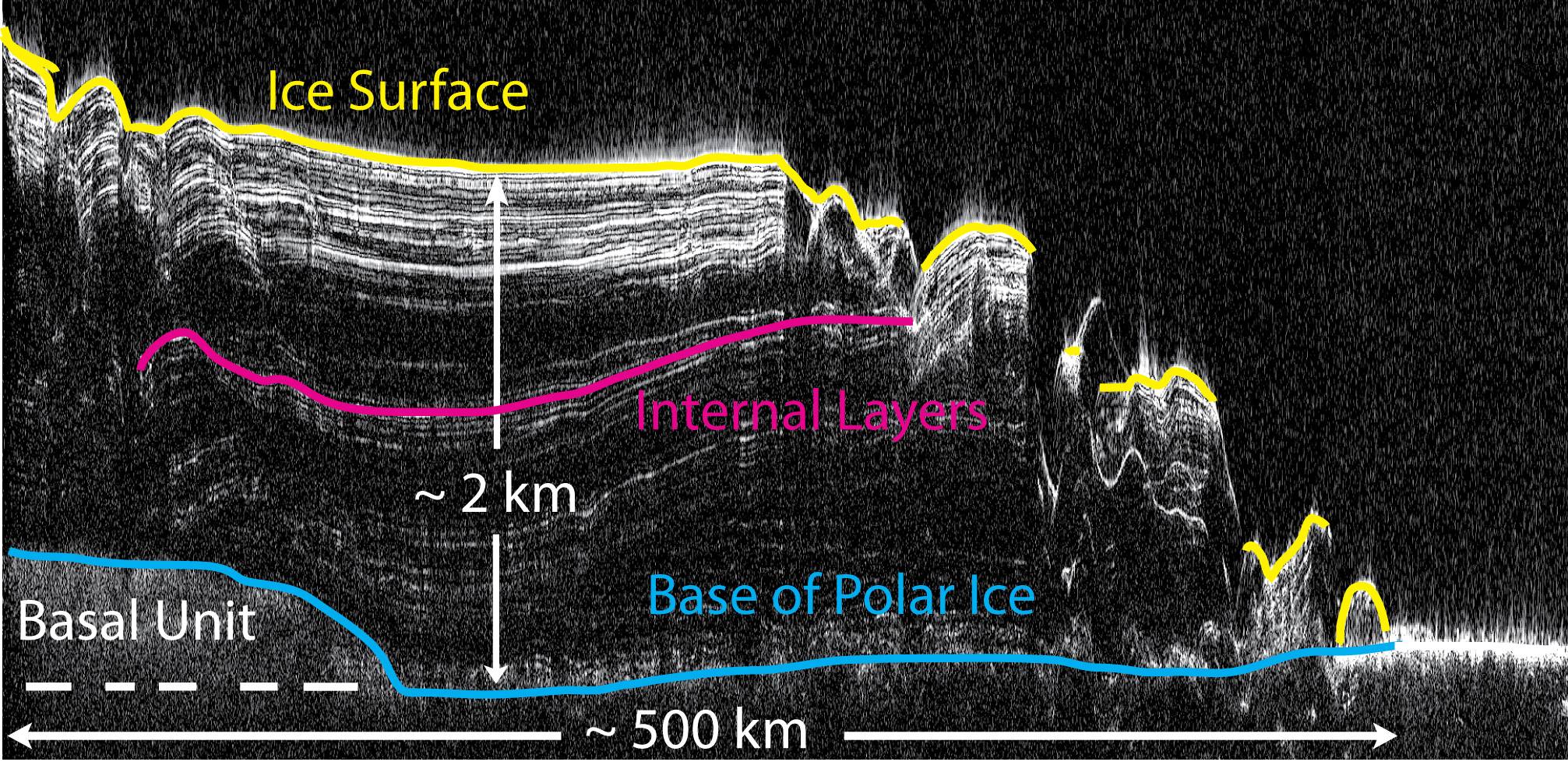This article suggests that the radar can penetrate the lakes and reports them to be hundreds of meters deep. The space.com article referenced seems to be sourced from a Geophysical Research Letters article from 2008 (not paywalled) which gives the radar wavelength (2.2cm) and claims that it would be absorbed in 2-20m of clean hydrocarbon, but also give other less direct ways of estimating lake depth which give higher values.
[9] A final, and completely independent, measure is radiometric. The darkest parts of some lakes, generally the largest ones, are ‘black holes’, offering no measurable radar return down to the instrument noise floor of ∼ −26 dB [Stofan et al., 2007]. This requires not only that the surface reflection be very small (consistent with a smooth surface of a low dielectric constant material, such as a liquid hydrocarbon surface unroughened by waves) but also requires that the liquid be deep and/or lossy enough to suppress a bottom reflection. Lake bottoms with sediment density increasing smoothly with depth could also suppress bottom reflections via gradient‐index impedance matching: however, there are morphological indications such as dark channels incised in almost‐as‐dark lakes that suggest that at least in some places bottom reflections are seen. Assuming then that such lakebed features are being hidden in ‘black’ areas by column absorption, a minimum depth can be inferred: the lower the assumed loss tangent δ, the deeper the lake must be. Clean liquid hydrocarbons have δ ∼ 10−4 to 10−3 [Sen et al., 1992; Rodriguez et al., 2003] although suspended or dissolved polar molecules such as nitriles and small tholin particles could increase these values. A penetration depth (1/e one‐way absorption ‐ see e.g. similar calculations elsewhere in the Saturnian system [Ostro et al., 2006]) of λ/2πδ√ɛ, with λ the radar wavelength of 2.2 cm and ɛ the real part of the dielectric constant (∼2), would therefore be 2–20 m ‐ lakes with nonzero reflectivity or visible lakebed features are therefore likely shallower than this range.
The Mars data comes from the SHARAD instrument which uses much longer wavelengths (15-25 MHz, 10-20m) which may explain the different absorption.
From its 10-meter (33-foot) antenna, SHARAD transmits radar waves in a frequency band swept from 25 to 15 megahertz, obtaining a 15-meter (50-foot) vertical resolution in free space, which reduces to 10 meters (33 feet) or less in the subsurface.
